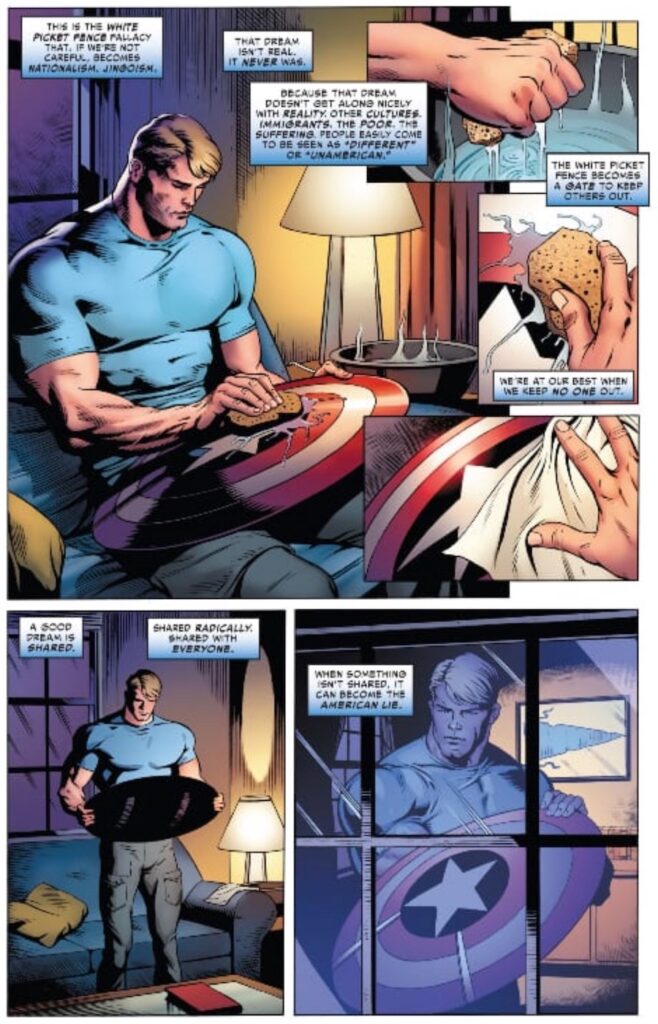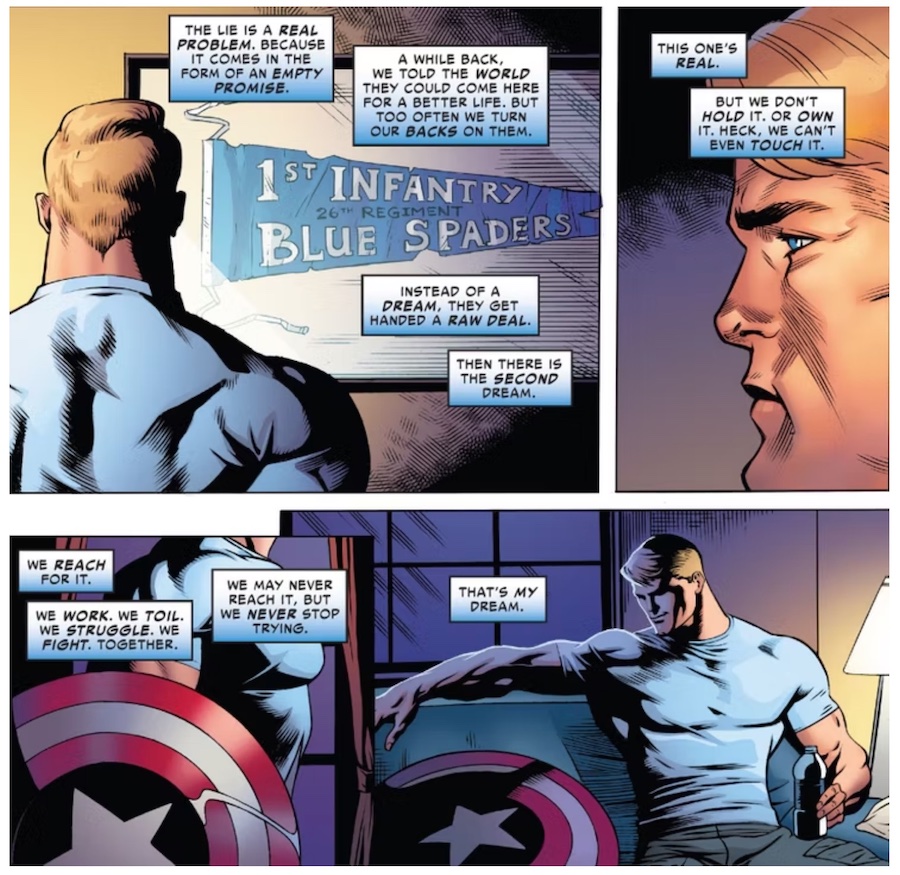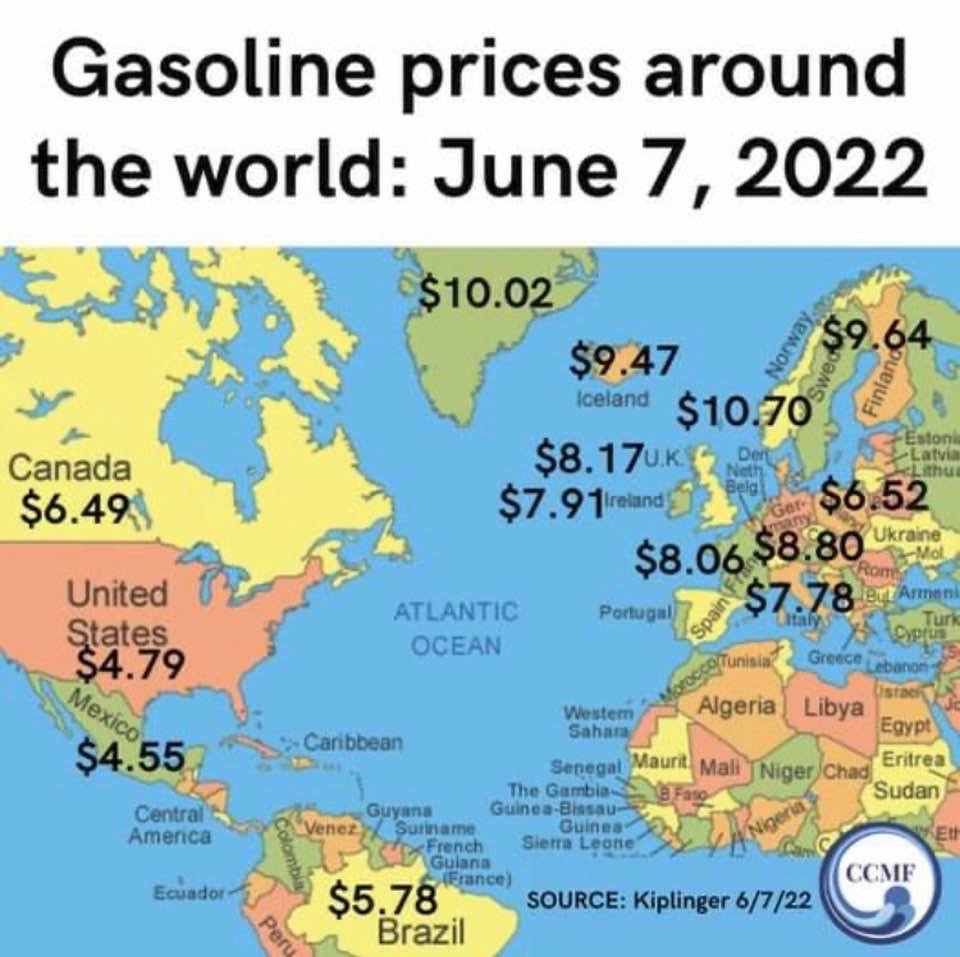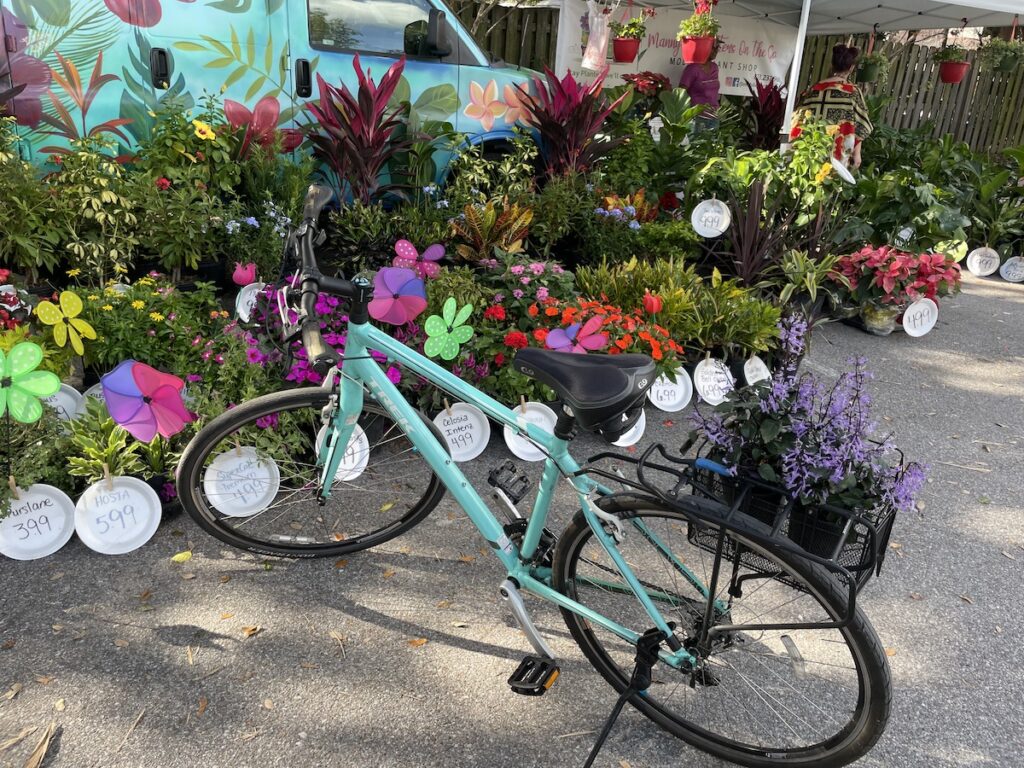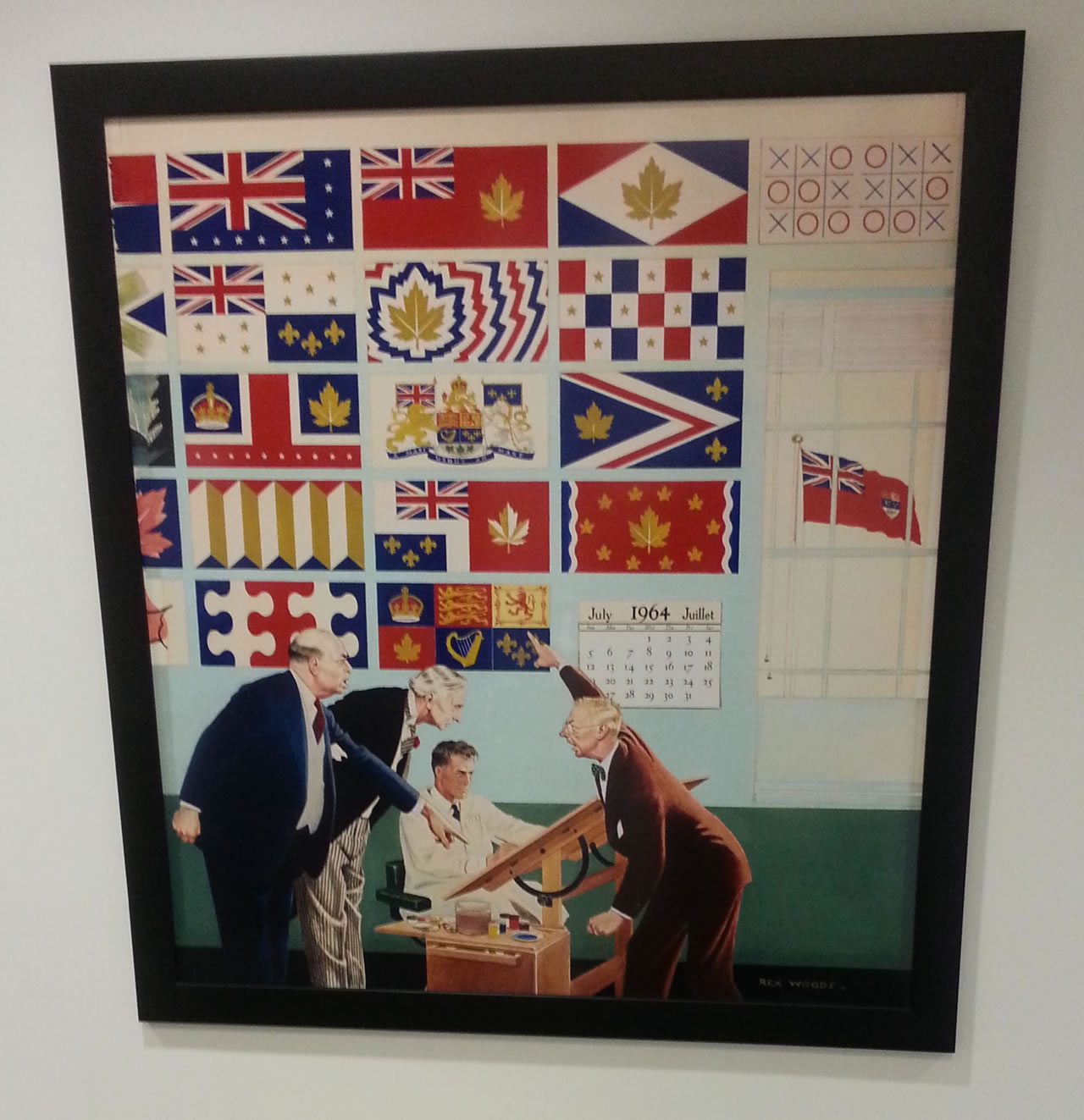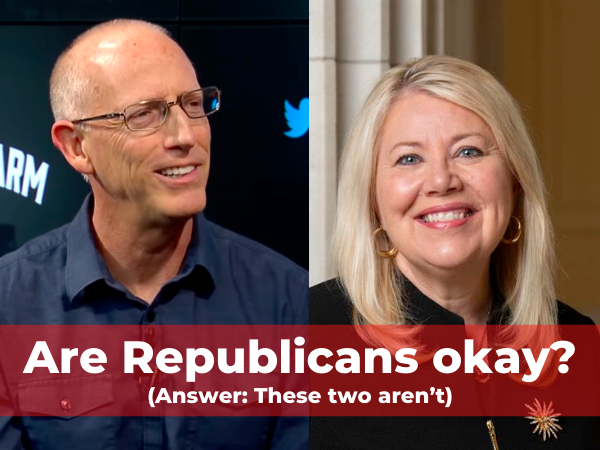
The question Americans should all be asking is: “Are Republicans okay?” Because if Scott Adams and Debbie Lesko’s recent statements are any indication, the answer is a very resounding “Hell no!”
Scott Adams
As a techie, I used to enjoy Scott Adams’ work as the creator of the Dilbert comic strip. As a decent human being, I stopped enjoying them as Adams’ fame and fortune grew and he started revealing his true self to the world, from his opinion on women…
“The reality is that women are treated differently by society for exactly the same reason that children and the mentally handicapped are treated differently. It’s just easier this way for everyone. You don’t argue with a four-year old about why he shouldn’t eat candy for dinner. You don’t punch a mentally handicapped guy even if he punches you first. And you don’t argue when a women tells you she’s only making 80 cents to your dollar. It’s the path of least resistance. You save your energy for more important battles.”
…to borderline Holocaust denialism…
I’d also like to know how the Holocaust death total of 6 million was determined. Is it the sort of number that is so well documented with actual names and perhaps a Nazi paper trail that no historian could doubt its accuracy, give or take ten thousand? Or is it like every other LRN (large round number) that someone pulled out of his ass and it became true by repetition? Does the figure include resistance fighters and civilians who died in the normal course of war, or just the Jews rounded up and killed systematically? No reasonable person doubts that the Holocaust happened, but wouldn’t you like to know how the exact number was calculated, just for context? Without that context, I don’t know if I should lump the people who think the Holocaust might have been exaggerated for political purposes with the Holocaust deniers. If they are equally nuts, I’d like to know that. I want context.
…to profiting from tragedy (and to put the awful cherry on top of the shit sundae, with blockchain) :
When a gunman opened fire at the Gilroy Garlic Festival in Gilroy, California, on Sunday evening, killing at least three people, including a 6-year-old boy, and wounding 12 others, Dilbert creator Scott Adams apparently saw a juicy marketing opportunity for his blockchain app.
And now, we have Scott Adams’ tweets from this morning, which he made in response to the Fourth of July shooting in Highland Park:
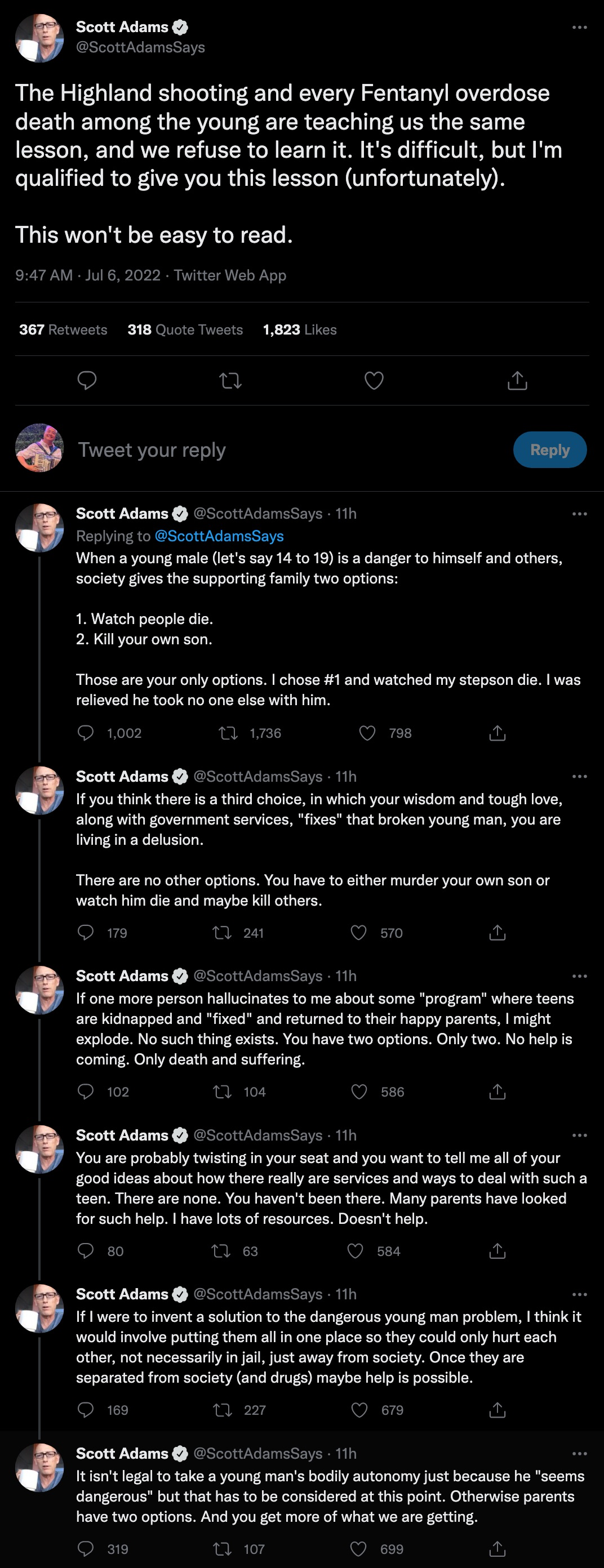
Here’s the text from these tweets:
The Highland shooting and every Fentanyl overdose death among the young are teaching us the same lesson, and we refuse to learn it. It’s difficult, but I’m qualified to give you this lesson (unfortunately).
This won’t be easy to read.
When a young male (let’s say 14 to 19) is a danger to himself and others, society gives the supporting family two options:
1. Watch people die.
2. Kill your own son.
Those are your only options. I chose #1 and watched my stepson die. I was relieved he took no one else with him.
If you think there is a third choice, in which your wisdom and tough love, along with government services, “fixes” that broken young man, you are living in a delusion.
There are no other options. You have to either murder your own son or watch him die and maybe kill others.
If one more person hallucinates to me about some “program” where teens are kidnapped and “fixed” and returned to their happy parents, I might explode. No such thing exists. You have two options. Only two. No help is coming. Only death and suffering.
You are probably twisting in your seat and you want to tell me all of your good ideas about how there really are services and ways to deal with such a teen. There are none. You haven’t been there. Many parents have looked for such help. I have lots of resources. Doesn’t help.
If I were to invent a solution to the dangerous young man problem, I think it would involve putting them all in one place so they could only hurt each other, not necessarily in jail, just away from society. Once they are separated from society (and drugs) maybe help is possible.
It isn’t legal to take a young man’s bodily autonomy just because he “seems dangerous” but that has to be considered at this point. Otherwise parents have two options. And you get more of what we are getting.
So those are the only choices: Kill or be killed. It’s bleak, it’s nihilistic, and it’s pretty on-brand.
Luckily, we’ve had at least one man who had a troubled youth speak up and say there are other ways and that paths to redemption actually do exist: James Gunn, the director of Guardians of the Galaxy, The Suicide Squad, and Peacemaker:
“Hey Scott Adams: As someone who was himself a violent teenager addicted to drugs & entered recovery with the help & love of his family, as well as someone who has seen dozens of other young men stay sober & become fruitful members of society, these are not the only two options,” Gunn tweeted.
Here’s another good response:

Debbie Lesko
Representative Debbie Lesko of Arizona gave a rather unhinged speech today when she took the floor of the House of Representatives to oppose a gun safety bill. Watch the video here:
She said:
“I have five grandchildren,” the congresswoman began in her Tuesday speech. “I would do anything—anything—to protect my five grandchildren. Including, as a last resort, shooting them, if I had to, to protect the lives of my grandchildren.” Growing more angry, Lesko then accused Democrats of trying to “take away my right to protect my grandchildren” and “the rights of law-abiding citizens to protect their own children.”
It’s all very “we had to destroy the village to save it.”
So the question remains: Are Republicans okay? Because some of the more vocal ones sound like death cultists.
Recommended reading






